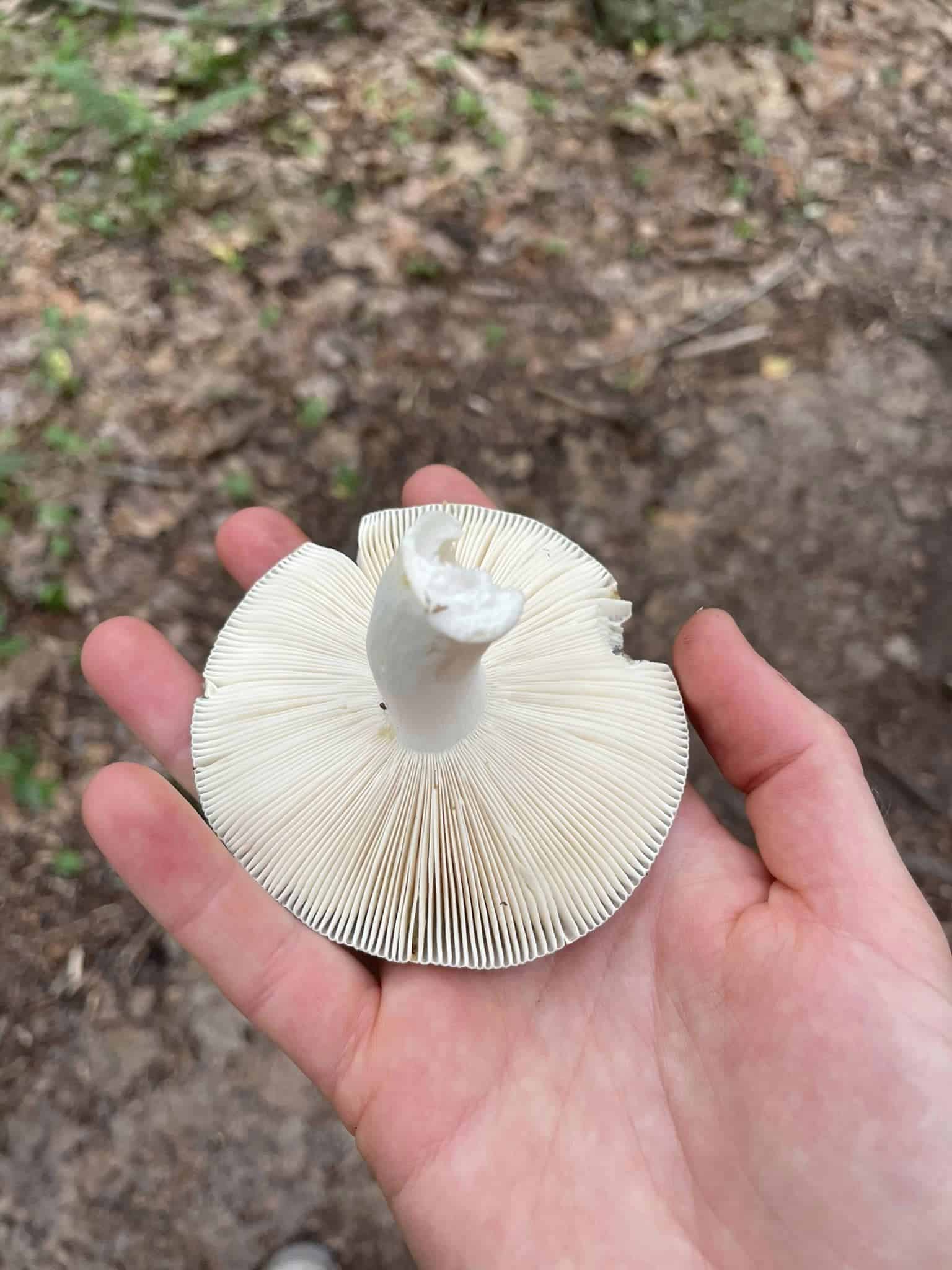Page Created by Connecticut Foraging Club
Upcoming Events | Meet the Instructors | Plant Archive | Mushroom Archive
----------------
Upcoming Events | Meet the Instructors | Plant Archive | Mushroom Archive
----------------
The Quilted Green Russula (Russula parvovirescens) is an edible mushroom that can be found in the Eastern United States. It was separated from the Russula virescens species in 2006.

Quilted Green Russulas are found most abundantly July-August in forested areas. They are mycorrhizal with hardwood trees and occasionally conifers. It’s most commonly associated with oak trees.

Quilted Green Russulas have greenish-blue cracked caps. The cracks appear around the edge and work their way towards the center as the mushroom matures. The cap is convex at first, flattening and developing a shallow depression as the mushroom ages. The cap and stem are brittle, being easily chipped or broken. This is a defining feature of all russulas. The spore print is white.

Russulas tend to get buggy. When collecting, the stem should be cut and inspected for bug holes. Young buttons are best for eating. The mushroom has a mild flavor. Drying will concentrate the flavor.
There are other green russulas. No green russulas are poisonous, but some may not taste great. To be sure you have Russula parvovirescens, look for the cracked caps with bluish-metallic tints.
--
Written by Amy Demers, founder of the Connecticut Foraging Club. To learn more about foraging in Connecticut, check out our upcoming classes.






